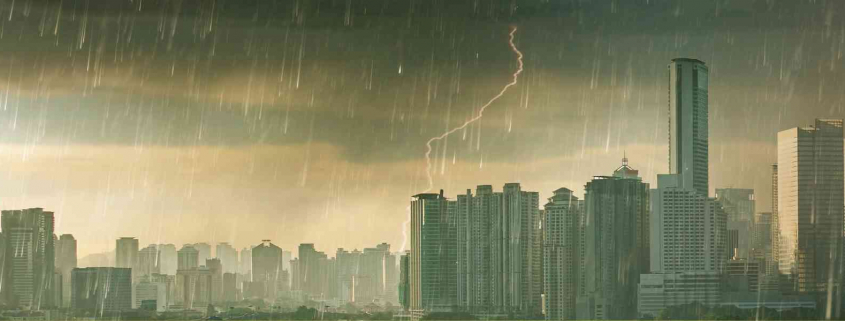Insurance coverage is top of mind for Florida’s commercial property owners following the damage left from Hurricane Irma.
Building owners had rushed to review their policies to determine whether they had adequate insurance coverage in place in preparation for the storm.
GlobeSt.com caught up with Tom Kersting, president of the insurance services division of Franklin Street, and Nancy Sheinberg, vice president of insurance services, to discuss how insurance providers are helping property owners navigate their Irma policy claims.
GlobeSt.com: What pre-hurricane steps did your team take to help expedite the claims process?
Kersting: We spent several days on the front end of Irma communicating with our clients, pushing out proactive risk management tips, encouraging them to review coverages and make sure they had their policies readily available post-storm. This information is provided when our clients bind policies, but it becomes important to “refresh” as a major storm approaches. This year we also developed a variety of digital tools so clients can easily get in touch with us and report claims if they have one.
Sheinberg: What we did before the storm really made a big difference. An emergency claims phone system was set up so clients were getting a call back within minutes of submitting a claim. Franklin Street has also developed a proprietary master policy layered program that can save property owners thousands of dollars both regionally and nationally, while meeting all lender requirements. Hurricane Irma is showing that our insurance coverages are solid, so it gives credence to the program.
GlobeSt.com: What type of insurance claims are you getting most frequently?
Sheinberg: What we’re seeing most are trees down and roof damage from fallen trees or water leakage. But we still have many clients in South Florida who haven’t been able to get to their properties to inspect the damage.
Kersting: Much of the damage that has been reported to us has been to our multifamily properties. Often multifamily assets are wood-framed buildings that are generally not as protected as office buildings.
The majority of our claims are coming from the east side of the state. We still expect more claims to come in, at this point some owners haven’t been able to visit their properties yet.
This is especially the case with out-of-town owners who may have difficulty getting access for a few more days. In other cases, it’s common for owners to be aware of damage but they haven’t decided yet if they want to report a claim or go about funding repairs themselves.
GlobeSt.com: What are some important lessons learned from Hurricane Irma?
Kersting: From an insurance stand point, there haven’t been major insurance claims incidents in Florida for over 10 years. An event like Hurricane Irma makes policy holders reevaluate their insurance coverage and take a hard look at their deductible levels.
These are conversations that need to be had, we don’t want our clients to be surprised in a time that they turn to their insurance carrier for help. We continuously push to educate our clients about their coverage options and show them how their insurance policy will be a valuable tool to protect their balance sheet, not simply an expense burden that appeases a lender.
(There are legal issues involved in filing insurance claims of which you may not be aware. Find out what you must know now to avoid felonies.)
Source: GlobeSt.


